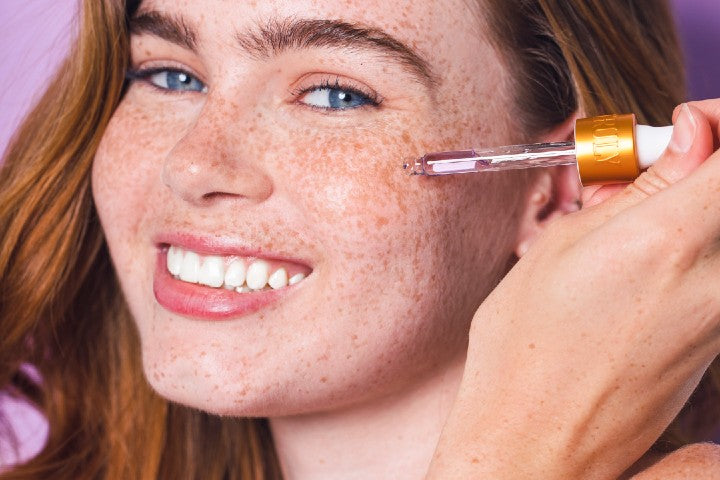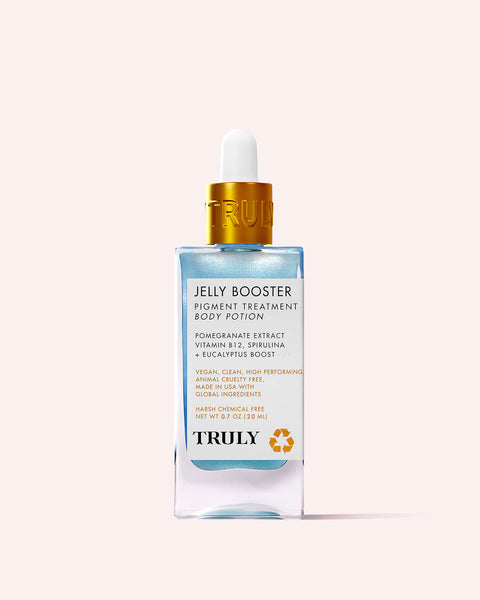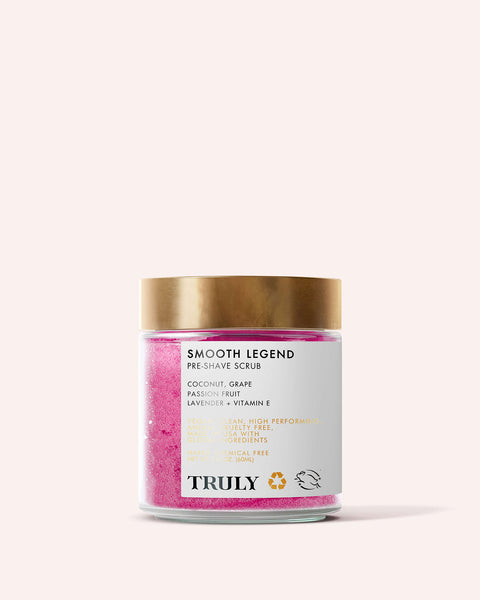Glycolic Acid: Is it As Good as the Experts Say?

Glycolic acid belongs in the ranks of ingredients like retinol, vitamin C, and hyaluronic acid for its smoothing, plumping effects.
This alpha hydroxy acid (AHA) can be found in toners, serums, or creams or as an in-office peeling treatment where it comes in stronger concentrations.
But what exactly is it? And is it as good as the experts say it is? Let’s find out!
GLYCOLIC ACID EXPLAINED
You may have heard of glycolic acid, but do you know what it is and how it functions? It turns out, this ingredient is pretty much the gold standard of exfoliation.
“It’s a water soluble acid and an ingredient that increases luminosity of the skin because it exfoliates the outermost dead layer of the skin, which is called the Stratum Corneum, and improves the reflection of light on the skin,” explains Dr. Carmen Castilla of Tribeca Skin Center.
She continues, “Sometimes people use scrubs, which are abrasive and can cause irritation, but unlike scrubs, when Glycolic acid is used at the right percentage and when done appropriately, it’s a much gentler way to exfoliate the skin.”
HOW GLYCOLIC ACID WORKS?
Glycolic acid is the smallest molecule of the AHAs. Because of its size, it can easily penetrate the skin – more effectively than other AHAs.
Glycolic acid works by accelerating skin cell turnover and dissolving the bonds that hold cells together. As a result, dead skin cells slough away more quickly than they would without the help of glycolic acid.
But that’s not all it can do!
“Glycolic acid stimulates fibroblasts in the dermis to produce increased amounts of collagen,” says dermatologist Kenneth Howe, M.D. Collagen is the protein that gives skin its elasticity and plumpness – and the protein that strengthens bones and tissues in the body.
By stimulating collagen production, glycolic acid helps the skin feel smoother and minimizes fine lines and wrinkles.
As you age, collagen production decreases with each passing year. Environmental aggressors like sun exposure and pollution can also breakdown collagen. Using glycolic acid in your skincare routine can prevent the destruction of collagen and keep your skin looking youthful and radiant.
JUST HOW GOOD IS GLYCOLIC ACID?
Glycolic acid acts as an effective exfoliator, sweeping away dull, dead skin cells to reveal a brighter, more even toned complexion. Over time, frequent use of glycolic acid can lighten dark spots, acne scars, and light freckles.
Because of its exfoliating abilities, glycolic can also help de-gunk pores, reduce breakouts, and enable other ingredients to penetrate the skin more deeply and efficiently.
Besides that, it triggers collagen production, lessening the appearance of creases on the skin and boosting elasticity. According to researchers, glycolic acid can also increase hyaluronic acid production, a natural component of skin that keeps it hydrated and smooth.
Without a doubt, glycolic acid offers many beauty benefits. The experts say it – and so does the existing research.
“Glycolic acid is one of the better studied and understood skincare ingredients,” says Noëlle Sherber, M.D., co-founder of SHERBER+RAD.
According to a 2013 review, past research shows that 8% glycolic acid improved skin brightness and reduced discoloration after 22 weeks of use. Further studies show that 5% glycolic acid products evened out texture.
HOW TO USE GLYCOLIC ACID IN YOUR SKINCARE ROUTINE
Because glycolic acid is an exfoliant, start small with it – especially if you have sensitive skin. As awesome as it is, using too much too fast may lead to adverse effects like redness and irritation.
Start by using it in a face wash.
“A glycolic cleanser can get your skin used to it, rather than diving straight into a leave-on glycolic product if you are unsure whether your skin can tolerate it,” says Alix Shapiro, skin therapist at Heyday in NYC.
Try a product that pairs glycolic with soothing and hydrating ingredients like Truly’s CBD Jelly Toning Solution, which includes aloe, rose petal, and tea tree.
Once you know your skin is happy with glycolic acid, you can then move on to a leave-on product like serum. You’ll love Truly’s Glow Up Kit, featuring a glycolic-formulated face serum and mask with pimple-draining heart-shaped acne patches.
For an all-over hydrating treatment, try Truly’s Purple Rain Facial Oil. You can apply this all over your body to promote smooth, moisturized skin.
Now that your skin has adjusted to glycolic skincare products, it’s time to take one step further and try a peel.
“I feel glycolic acid is most effective when administered as a chemical peel done in a health care practitioner’s office,” says Howe. “The medical-grade peel pads we use are stronger, with more potent effects, and many people get better results with stronger treatments done intermittently—once a month, say.”
You can either visit your derm every month or, if that’s not possible, invest in at-home peel pads. They’re a milder form of peeling, completely safe to use at home.
WHAT’S THE CORRECT PERCENTAGE OF GLYCOLIC ACID?
Experts don’t recommend going above 10 percent at home. That’s because the higher the percentage, the higher chance it penetrates deeper. The problem with this is that your skin can actually experience a chemical burn when the concentration is too high.
If you’d like to go above 10%, pay your dermatologist a visit.
IS GLYCOLIC ACID SUITABLE FOR ALL SKIN TYPES?
According to Shapiro, “It’s best for normal, combination, and oily skin types.” Still, it’s not great for everyone. Those with highly sensitive skin or dry skin may react to glycolic acid with irritation – and that’s regardless of its form.
You should also take the seasons into account. For instance, in the winter your skin barrier’s function is more vulnerable to irritation. In the summer, however, sun exposure may increase skin cell turnover naturally, making glycolic acid use riskier as it can make the skin more sensitive to sunlight.
If you have any chronic skin conditions, we advise booking an appointment with your dermatologist before using glycolic acid to ensure you don’t experience any unpleasant side effects.
All in all, glycolic acid is an excellent ingredient with a host of skincare benefits. Used correctly and in the right formulation, you can look forward to smoother, softer, younger-looking skin with consistent use of glycolic acid.








